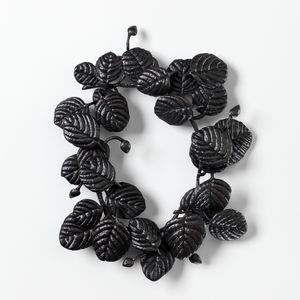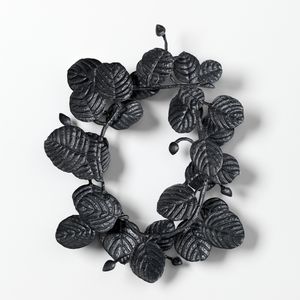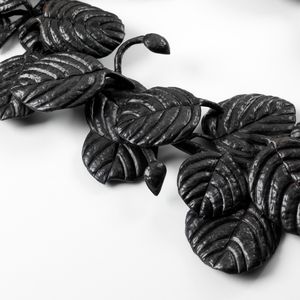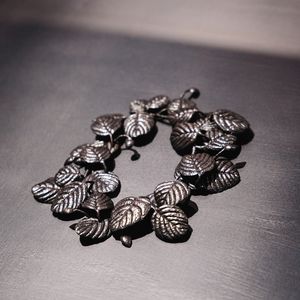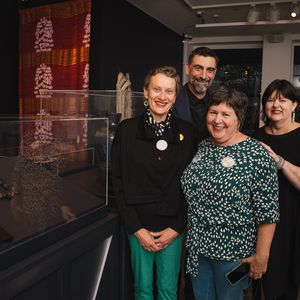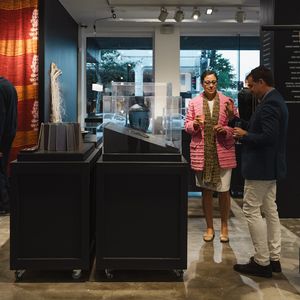Object Podcast Series 3 Episode 3: Julie Blyfield
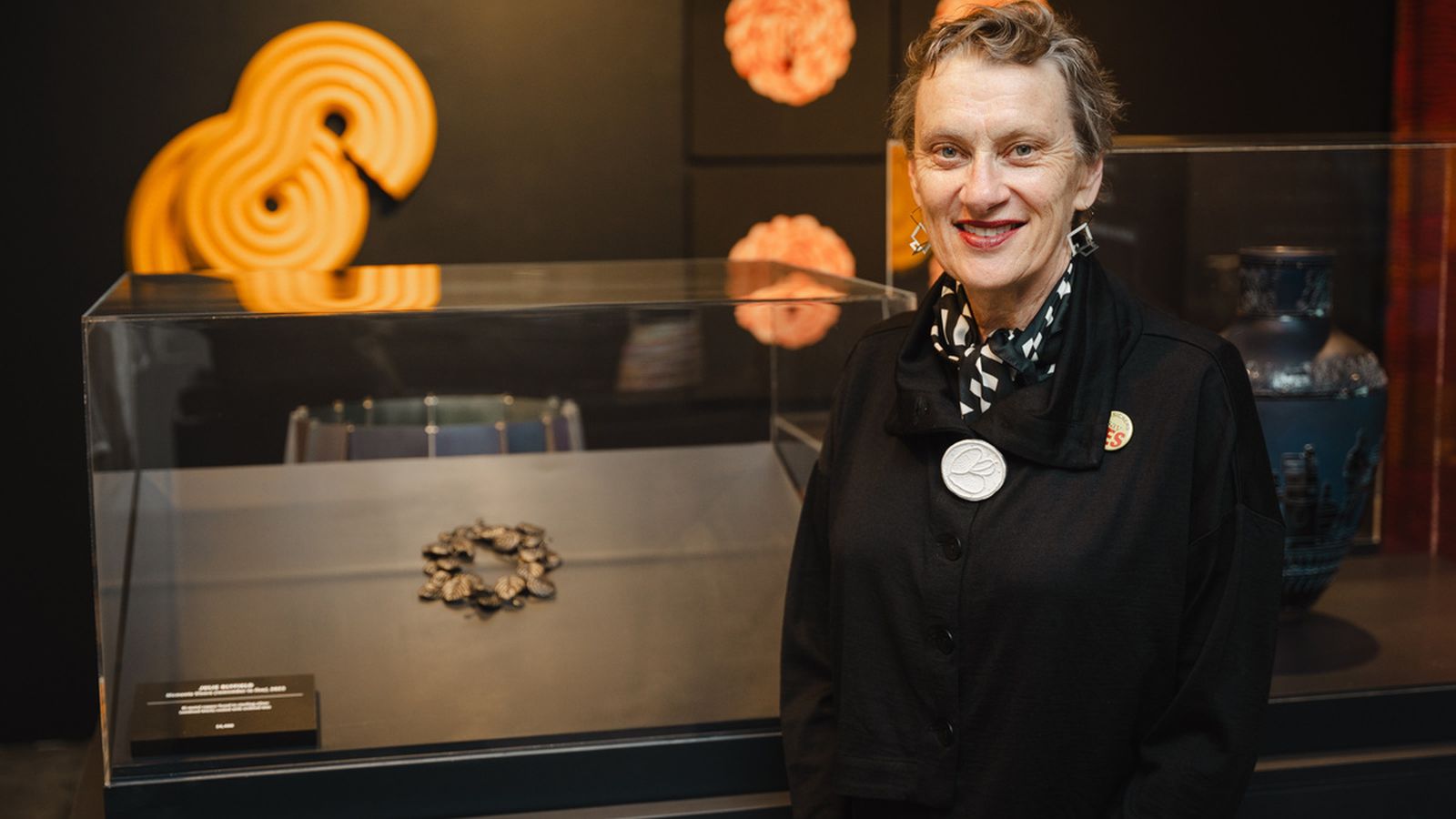
Object Podcast Series 3: Behind the scenes of MAKE Award: Biennial Prize for Innovation in Australian Craft and Design
Episode 3: Julie Blyfield, Finalists in 2023 MAKE Award
Show notes
Host Lisa Cahill chats with contemporary jeweller Julie Blyfield. Hear how Julie's MAKE Award entry is inspired by love and loss.
Julie Blyfield is a South Australian artist renowned for her work inspired by collected botanical specimens and forms. Using the traditional metalsmithing techniques of chasing and repoussé, Blyfield makes intricately textured pieces, which capture the essence of the Australian natural landscape.
Judges Jason Smith, Hyeyoung Cho and Brian Parkes share their thoughts on Julie’s work Memento Vivere (Remember to live).
Transcripts
Word document: TRANSCRIPT OBJECT Podcast S3 Ep 3 Julie Blyfield
PDF document: TRANSCRIPT OBJECT Podcast S3 Ep 3 Julie Blyfield
Guests
- Julie Blyfield, contemporary jeweller
- Jason Smith, Director and CEO of Geelong Gallery, Victoria
- Hyeyoung CHO, Chair of the Korea Association of Art and Design, and expert panel member of the Loewe Foundation Craft Prize
- Brian Parkes, CEO at JamFactory, Adelaide, South Australia
Show highlights and takeaways
The caperberry bush [0:10]
Julie and her late partner Chris lived in their house for 30 years and both planted the garden together. Chris planted the caperberry bush, and now Julie tends to the garden.
Objects and techniques [1:45]
Julie is a jeweller and metalsmith who makes jewellery, brooches, neckpieces, earrings and table objects. She uses the technique of "chasing", which is a process of texturing metal using small steel tools. She places the metal in a pitch bowl, which has a resin-based material that you can soften, and creates textures.
Choice of materials [2:30]
Julie uses silver for her work, and has recently been using a bonded metal or ‘bimetal’ - a combination of copper and silver. This is the material used in her MAKE Award entry,
Memento Vivere (Remember to Live) [3:40]
Julie’s entry in the MAKE Award is inspired by the caperberry bush planted by Julie's late partner, Chris.
“I took pieces from the caper bush. I actually cut the bush and made the little wreath shape and then I transposed it into metal.”
Julie says the work is quite intimate in scale, being about 22 cm wide and 20 cm high. It's a wall piece.
“That's a little bit different for me to make something that you look at on the wall. But I wanted it to be sort of positioned where people could look at it in an intimate way, in a very personal way.”
Working through grief [5:00]
Julie turned to her work to help get her through grief, and found comfort in creating things in her studio.
“Some days I just think, ‘I've just got to do something.’ You know, you sort of force yourself. So it was actually good to just go and make something. Some days I'd just go in there and sweep the floor, and then do a little bit. I'm naturally a working person. I like working. I enjoy working. So I thought, ‘This is the best thing to put your head into.’ “
Jason Smith, MAKE Award Judge [5:40]
Jason Smith, CEO and Director of the Geelong Gallery, highlights the beauty, evocativeness, and innovation of Julie’s entry. He commends her for pushing the boundaries of her craft, particularly noting the interesting scale of the piece that serves both as a sculptural object and potential jewellery.
“It's quiet. It's very evocative. It's dark and complex. We wanted to include this work because Julie is one of those jewellers and metalsmiths again who continues to push her practice into new realms”.
Brian Parkes, MAKE Award Judge [7:30]
Brian Parkes, CEO at JamFactory in Adelaide, emphasises the piece's delicate repoussé work and intricate details. He says, “It's a beautiful work. The level of detail and craftspersonship in this work is one of the finest in the whole exhibition.”
Innovation in scale [8:10]
Julie explains that “translating up to a bigger scale” means you have to be quite innovative the way you make things. She says, “When you scale up, it creates all sorts of other problems. You have to problem-solve how you're going to actually construct the piece and put it together so that the thing holds its form and holds its body.”
Art teacher training [9:00]
Originally Julie Blyfield trained as an art teacher, and learnt traditional art forms that included drawing, painting, printmaking, and photography.
She still use a lot of photography and drawing, and often makes paper models to “quickly resolve ways that I'm making things.”
Recycling scrap metal [9:40]
All of Julie’s scrap metal is deliberately recycled, for the reasons that materials are very expensive and that our natural resources are limited.
Using cuttings of the caperberry bush [10:10]
For Memento Vivere (Remember to Live), Julie used plant cuttings from the caper bush to make the wreath form. She then drew the wreath, and used those drawings as a maquette for translating the design into metal. When she can, Julie uses carbon paper to transfer the drawings to the metal.
Hyeyoung Cho, MAKE Award Judge [12:10]
Hyeyoung Cho notes that the wreath is “a piece that you really have to look at, and examine, and then study. It's a wonderful, beautiful piece.”
Unique jewellery technique inspired by herbariums [13:30]
In her research, Julie looked at plant collections in herbariums. She noticed that often the plants were stitched onto the accession cards and thought, ‘What a beautiful way of attaching the plants.’ It gave her the idea of how to construct her work.
She put two layers of metal together and drilled two holes. Wire goes through, is twisted at the back and soldered. Julie calls it ‘stitching’ because “it’s like stitching the pieces together and it's quite a strong method of joining.”
Colouring the work [14:40]
Julie uses potassium sulphide to blacken the metal. The process involves dissolving potassium sulphide in boiling water to make a solution that turns the metal black when submerged. She carefully controls the strength of the solution to prevent flaking. After colouring, she brushes the piece, applies archival wax, and buffs it with a silk cloth, resulting in a sheened finish.
Victorian mourning jewellery [16:30]
Julie acknowledges the influence of Victorian mourning jewellery on her work. Memento Vivere (Remember to Live) draws inspiration from this tradition, particularly in its wreath shape. Having explored Victorian mourning jewellery during her research in the UK in the late 1990s, Julie incorporates elements of this style into contemporary pieces.
The JamFactory South Australian Icon [18:30]
Julie Blyfield has been recognised as the JamFactory South Australian Icon. JamFactory’s Icon series is an annual solo exhibition celebrating the achievements of South Australia’s most influential artists working in crafts-based media.
CREDITS
Object is a podcast of the Australian Design Centre. Object is produced by Jane Curtis, in collaboration with Lisa Cahill. Sound engineering is by John Jacobs.
Return to Object: stories of design and craft main page

